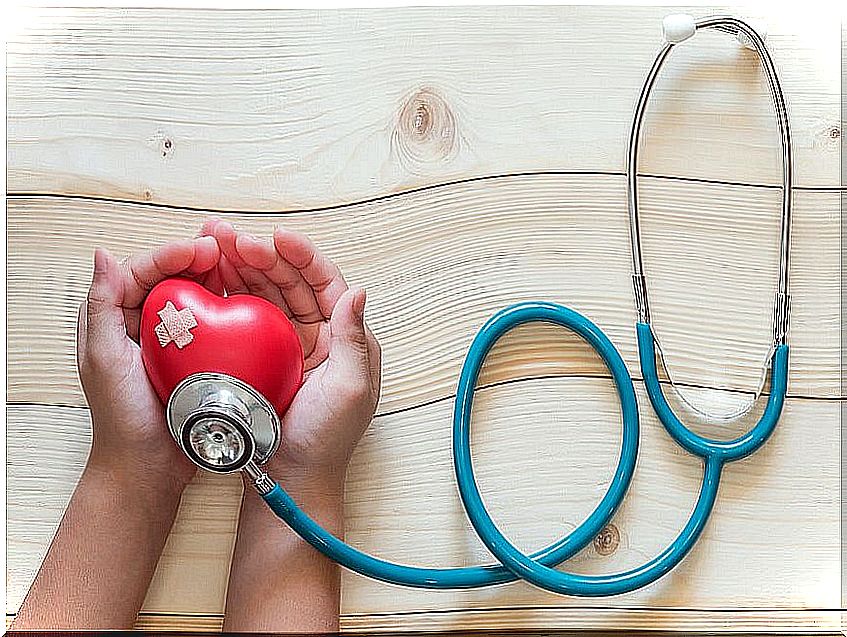How To Detect A False Heart Attack
The false heart attack is characterized by chest pain, and that situation is already stressful. For anyone, chest pain is associated with a heart problem, which triggers alarms and anxiety.
However, chest pain doesn’t always come from the heart. In reality, most of the time, this type of pain does not mean something serious, but is associated with inflammatory or anxiety problems. In any case, due to the true possibility of a cardiac cause, it is carefully studied.
This is how the false heart attack appears. As its name implies, it is a clinical picture where the symptoms suggest the presence of a heart attack, but ultimately another process is happening in the body.
There are several syndromes that hide behind the false heart attack, and although medicine recognizes its manifestation as such, there is no concrete agreement on which diseases are false heart attacks and which are not. Perhaps the only consensus is that which recognizes hyperkalemia as the main cause.
Hyperkalemia is increased levels of potassium in the blood. When it appears, the patient feels chest pain and is accompanied by nausea or vomiting. The pain is so intense that it raises the suspicion of a heart attack. In addition, it is very common in diabetics and hypertensive people, which increases the assumption.
Laboratories for false heart attacks
A key issue in the medical care of patients with chest pain is the availability of nearby laboratories to run some basic tests. Among them, troponin and the ionogram.
Troponin analysis detects the presence of this protein in the blood, which is indicative of an acute myocardial infarction when it is above certain values. The test is not totally sensitive, but it is estimated that it can rule out up to 60% of chest pains that are not heart attacks.
This simple determination would improve hospital admissions and reduce false diagnoses. The fact is that it is not available in all health centers, and not all doctors request it.
The electrocardiogram is not as efficient as troponin in ruling out false heart attacks. Sometimes some study traces look like an ongoing heart attack, without being one. This is without taking into account that the electrocardiogram must be read correctly, unlike troponin, which expresses a round value.

Broken heart syndrome
Behind the false heart attack we can mention a clinical picture known as broken heart syndrome. The symptom is, of course, sharp and intense chest pain.
The diagnostic problem it raises is that it alters the electrocardiogram and can even vary laboratory values, simulating a heart attack that is not happening. These patients end up undergoing a cardiac intervention that finds the arteries in perfect condition.
The cause that originates it is a very powerful and sudden state of stress, generally derived from a distressing situation or bad news received. It has been described in people who receive bad news, such as the death of a family member.
The name of the syndrome has not always been the same, despite being a recently recognized pathology. It was previously called tako-tsubo cardiomyopathy , because the images of these hearts looked like a tako-tsubo, which is a container used by fishermen in Japan.
Broken heart syndrome always evolves favorably, with almost no complications. In a few weeks, patients regain their normal EKG and laboratory values to match.

Tietze syndrome
A common cause of false heart attack symptoms is costochondritis or Tietze syndrome. It is an inflammation of the cartilage that connects the ribs with the sternum.
It is common in young women and in people who have made some specific effort with both upper limbs. It usually evolves in a benign way, disappearing after days or weeks without intervention. In any case, almost all patients are medicated with anti-inflammatories.
Chest pain is what generates alert. To distinguish it from a real heart attack, the doctor usually puts pressure on the ribs and the sternum, looking for pain on palpation, which does not happen when the origin is cardiological.
Even if it is a false heart attack, you must consult
As we said before, chest pain requires a study to rule out serious cardiological causes, including acute myocardial infarction. Therefore, we must consult a professional when we feel such pain. It is very likely that it will result in a benign problem, but it will be the doctor who determines it and gives us the necessary guidelines.









